During Chinese New Year, every Chinese family will decorate their home to welcome the arrival of the new year. Chinese New Year decorations aren't just for beauty. They also carry the best wishes of the Chinese for the New Year. If you experience your tour to China during the Chinese New Year, you may find a lot of beautiful red decorations on the streets or in shops in China. Red represents joy, happiness, and auspiciousness in Chinese culture, and is often used for major festivals like Chinese New Year. But do you know what decorations come with the Chinese New Year? This article will give you some Chinese New Year decoration ideas.
Chinese New Year Decorations
1. Red Chinese Lanterns
Red Chinese Lanterns are one of the important parts of Chinese New Year decorations. Red lanterns are popular in both ancient and modern times. In ancient China, people believed that red could drive out evil spirits. Hanging red lanterns can drive away bad luck and keep the family safe. Hanging red lanterns in Chinese New Year not only brings out the festive atmosphere of the festival but also represents people's good wishes for health and peace. During major festivals, many streets, shops, and even homes in China hang red lanterns. In areas inhabited by overseas Chinese, such as Chinatown, red lanterns are also hung. At night, the lanterns are lit up with red light, which looks grand and joyful.
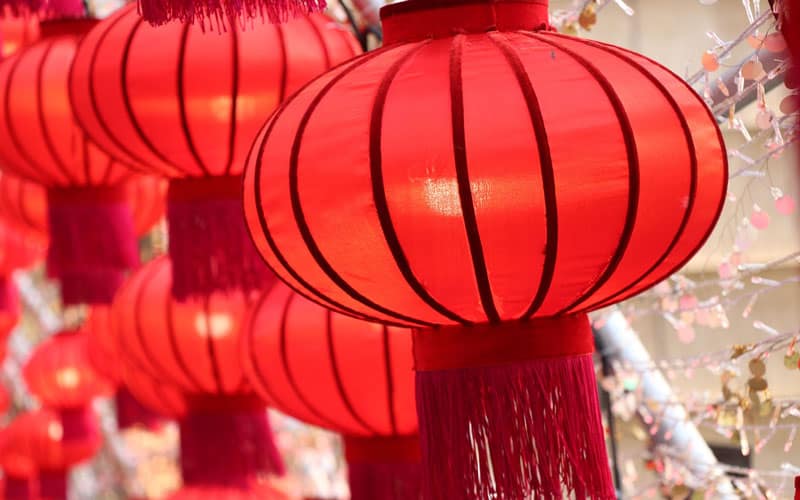
2. Spring Festival Couplets
As an essential Chinese New Year decoration, Spring Festival couplets are always prepared in advance. If you're good at calligraphy, you can write on your own. Most of the Spring Festival couplets are written on red paper with black characters or gold characters. It draws on the literary form of traditional Chinese poetry. The content written on the Spring Festival couplets usually contains auspicious words and good wishes. Generally, the old Spring Festival couplets are removed, and the new ones are pasted on New Year's Eve. It means saying goodbye to the old year and greeting the new year. In some places, Spring Festival couplets are used as a magic weapon to drive away the monster “Nian”. When the Chinese New Year is over, they will take off the couplets.
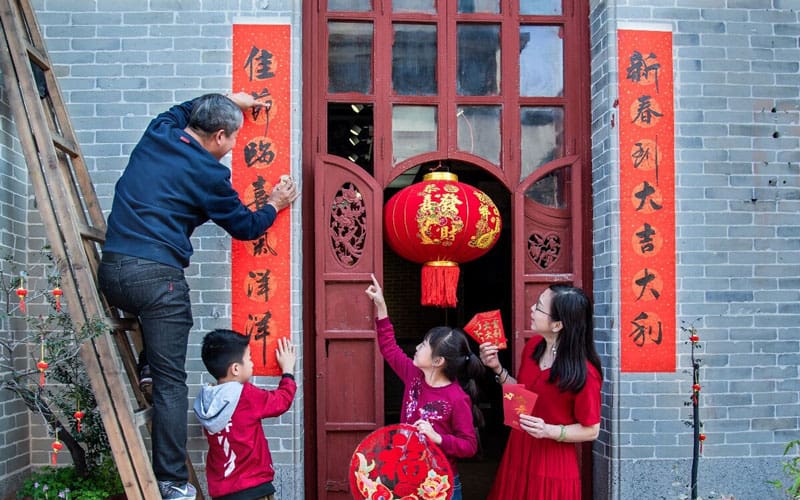
3. Fu Characters
Fu Character (“福”) is a Chinese New Year decoration for the home. In traditional Chinese culture, the word “Fu” has a special meaning. It represents good fortune and happiness. Fu Character is usually written on red paper. Posting the Chinese character “Fu” means praying to god to grant happiness and good fortune to the family. Sometimes Chinese people paste the Fu Character upside down, which means “福到了” in Chinese. This means that good fortune arrives at home.
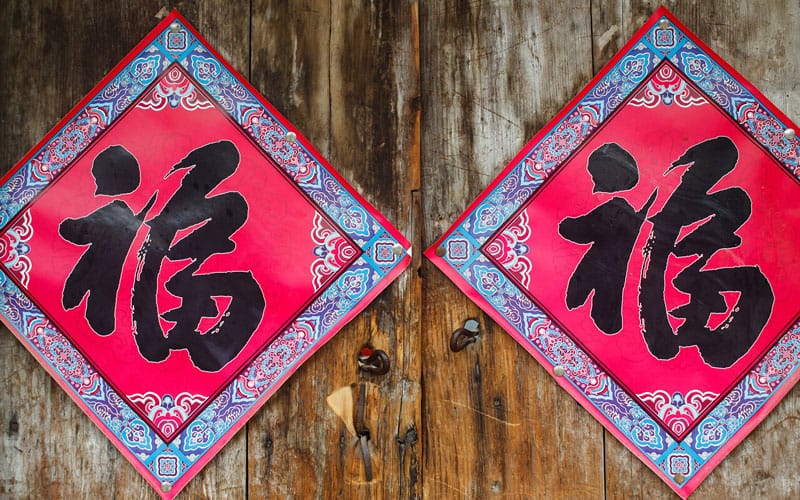
4. Door Gods
Door gods couplets are Chinese New Year door decorations. The main purpose of posting door gods during Chinese New Year is to drive away evil spirits, guard the family, and bring peace and luck. There are many different kinds of door gods with different images and meanings. For example, Qin Qiong and Yu Chigong are some of the most famous door gods in Chinese folk culture, known for their bravery and loyalty. Zhang Fei and Guan Yu's image implies peace in and out. And the God of Wealth symbolizes wealth and prosperity. You can choose according to your own preferences. The door gods are usually a pair and attach to each side of the door.
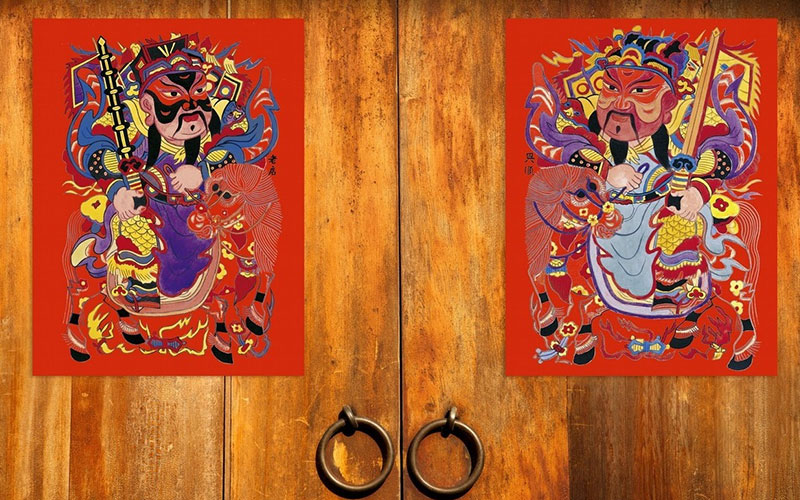
5. Paper Cutting Arts
If you tour China during Chinese New Year, you could try to DIY your Chinese New Year decorations. Paper cutting is a paper pattern that is attached to windows. The custom of sticking window decorations originated from the ancient paper-cutting art in China. As time went on, paper cutting became one of the decorations for Chinese New Year. This Chinese New Year decor is generally in red. The styles of paper cutting are diverse. Various complex and beautiful patterns can be created through different cutting techniques. In addition to animals and plants such as fish, dragon, phoenix, peony, peach, grain, etc., there are some auspicious characters such as “喜” (happiness), “福” (fortune), “寿” (longevity), and so on. If you plan your China tour during Chinese New Year, you could try to DIY your Chinese New Year decorations.
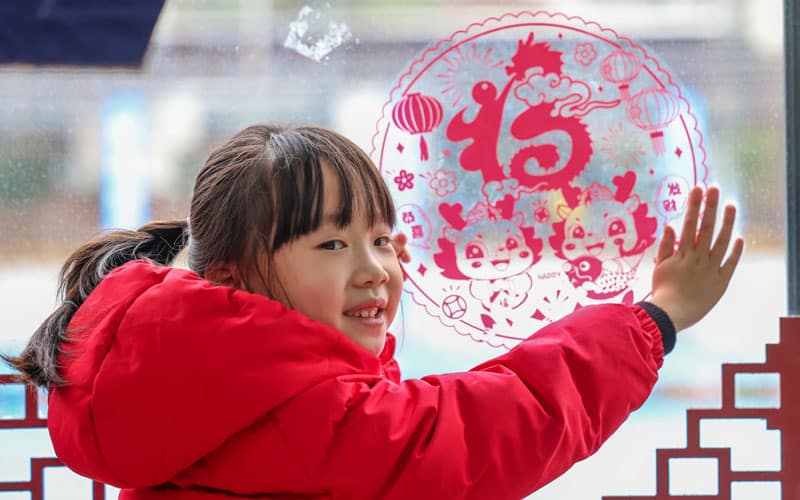
6. Kumquat Trees
Kumquat and tangerine are popular as Chinese New Year fruits. Placing kumquat trees or tangerine trees during Chinese New Year is not only one of the Chinese Lunar New Year decorations but also a reflection of traditional Chinese customs and Chinese culture. During Chinese New Year, a pot of kumquat trees full of golden fruits symbolizes good luck and wealth for the coming year. Chinese people express their yearning and expectation for a better life in the New Year. Especially in areas such as Guangdong and Fujian, where there are bound to be a few pots of kumquat trees hanging with red pockets or small lanterns in front of their house. This implies a lucky fortune in the new year.
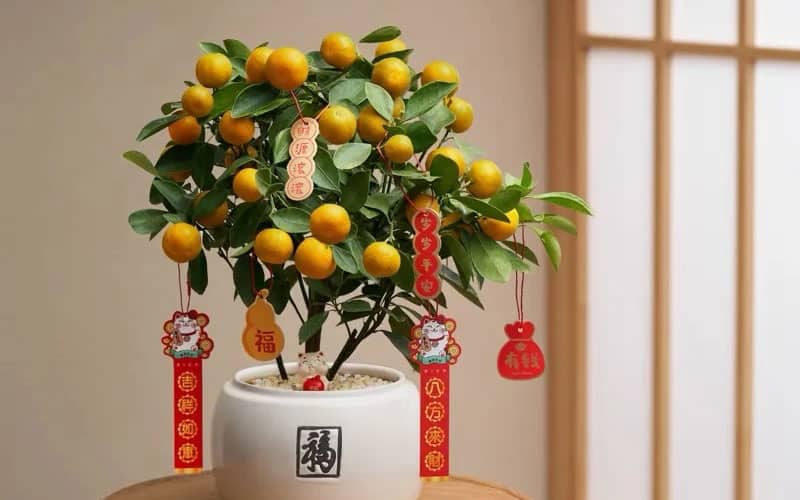
7. Chinese New Year Paintings
Chinese New Year painting is an ancient folk art form and a traditional Chinese New Year decoration. Chinese New Year painting originated from ancient China's worship of nature and belief in gods and spirits. People post Chinese New Year paintings during Chinese Lunar New Year to express their best wishes for dispelling misfortune and welcoming good fortune. The original theme of the Chinese New Year painting was to ward off evil spirits. However, it has a wider variety of themes now. In addition to keeping evil spirits away, the themes of Chinese New Year paintings also include auspicious patterns (such as fish and lotus flowers), mythological stories (such as the Eight Immortals Crossing the Sea), historical figures, and life scenes (such as scenes of harvest and children playing).
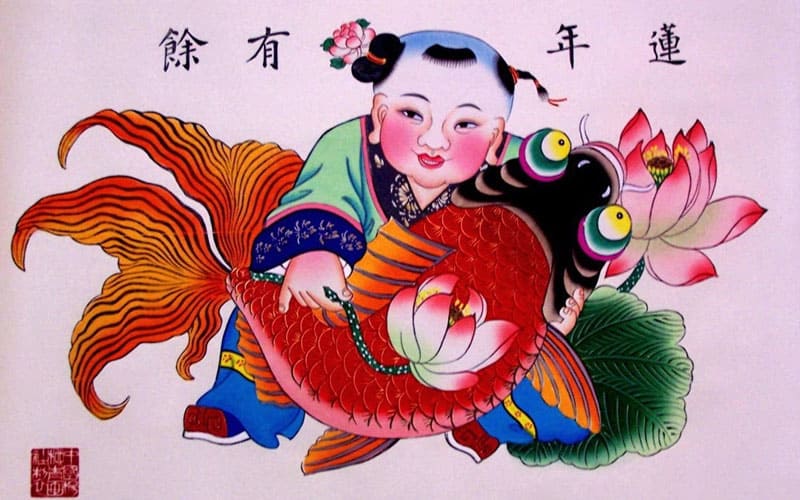
8. Blooming Flowers
During Chinese New Year, people usually put some flowers in their homes to add a festive atmosphere. The flowers look vibrant and make you happier. You can buy a potted plant or fresh-cut flowers. Holly is a good choice. The red fruits hanging all over the branches symbolize the joy of a good harvest and imply prosperity. Holly is often paired with other things as a Chinese New Year decoration. Besides, Chinese people also use the branches of flowers such as plum blossom and peach blossom to express their wishes for a prosperous New Year.
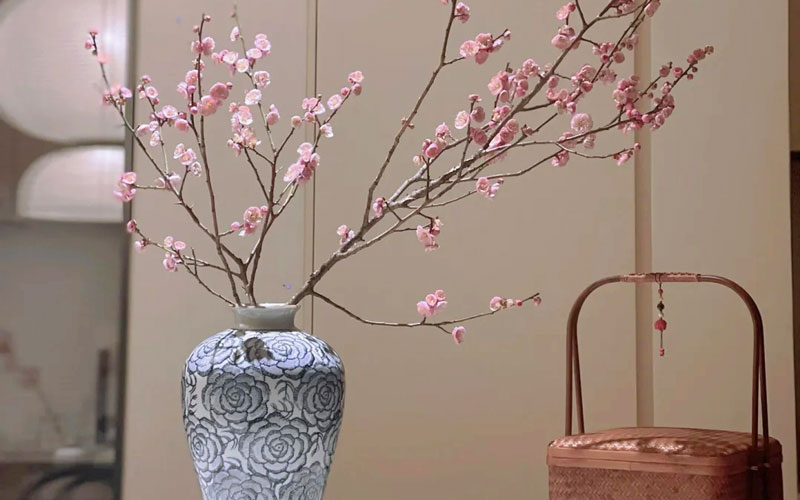
9. Red Packets
Red packets (hongbao), also known as lucky money, are one of the traditional customs during Chinese New Year. Red packets are usually given by elders or married people to younger generations or unmarried people to express blessings and good luck. Red packets can be used not only as a gift for Chinese New Year but also as a decoration for Chinese New Year. Usually, you will see people sticking red packets on the wall in some malls or stores, creating a wall of red packets. Or you can create a red packet tree with red packets, prayer ribbons, Chinese knots, and sachets.
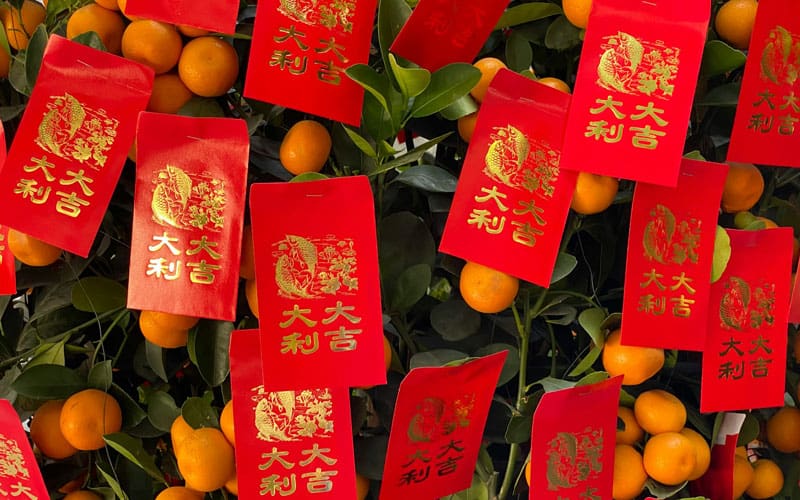
10. Chinese Knots
The Chinese knot is a kind of hand-woven handicraft made of a single silk thread, with a symmetrical and delicate appearance. Although Chinese knots come in a variety of colors, the common one is red. Chinese knots are regarded as auspicious items for warding off evil and bringing good luck. A complex Chinese knot consists of several different types of knots or is repeatedly woven. In addition to the red line used for weaving, Chinese knots can also be decorated with other auspicious adornments, like beads and jade, as part of them or as pendants. Different Chinese knots have different symbolic meanings. For example, the "Fu Character” Knot represents good fortune, the "Double Happiness" Knot represents celebration, and so on.
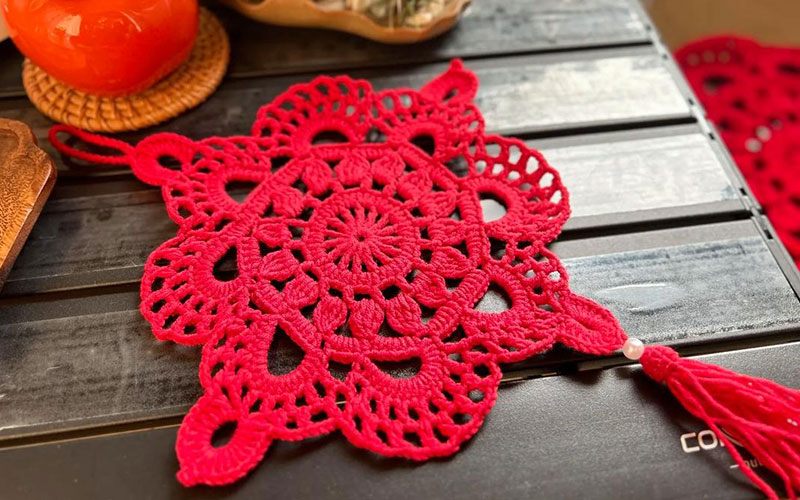
11. Zodiac Ornament
Chinese New Year decorations are not only related to red but also to the Chinese zodiac animal of the year. 2026 is the Year of the Horse. So, the decoration featuring horses is a must for Chinese New Year decoration 2026. The 12 zodiac animals have different characteristics and symbols. Horses usually represent power, success, and freedom. Zodiac ornaments can be used as home decorations or given to your friend or family member who is a Horse. Choosing the right horse decoration can not only improve your luck but also resolve the crisis and keep you safe.
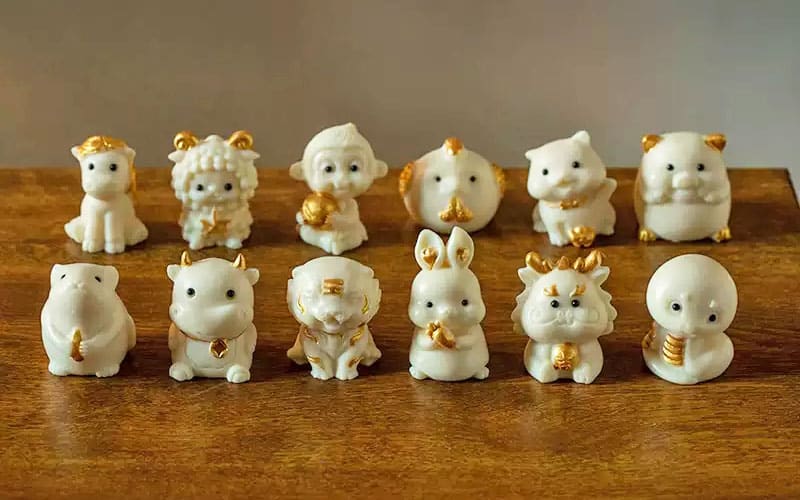
12. Wall Calendar
Chinese people usually prepare a new desk calendar or wall calendar before the New Year arrives. During Chinese New Year, people replace their calendars with new ones, which symbolizes ringing out the old year and welcoming the new. The Spring Festival calendar usually contains auspicious colors such as red and gold. And it is equipped with various elements related to the Chinese New Year, such as auspicious patterns, “Fu” characters, zodiac animals, blessing words, etc. The designs on the calendars are not only beautiful but also have a good meaning of good luck and happiness. In addition to the Gregorian calendar dates, the Spring Festival calendar usually displays the dates of the Chinese lunar calendar, including daily taboos, solar terms, festivals, and other information for people's reference.
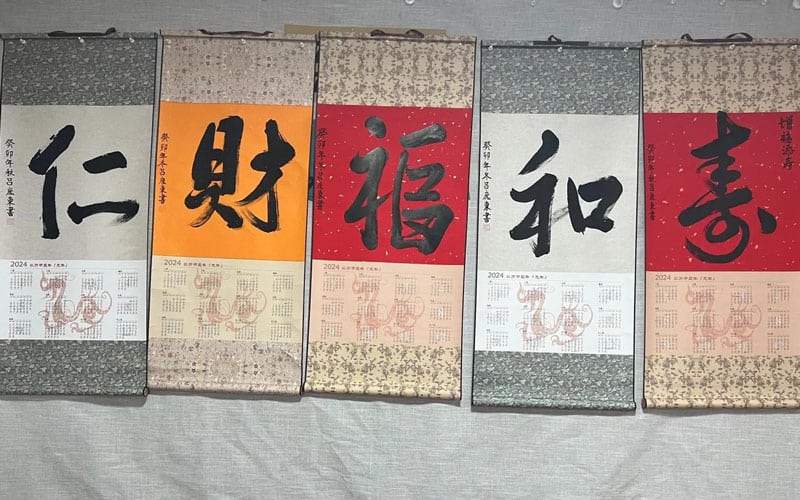
13. Chinese Firecrackers
The custom of lighting firecrackers has a history of more than 2,000 years in China. As the legend has it, firecrackers are set off to drive away the monster “Nian” and to prevent the disasters it brings. Chinese people not only light firecrackers to drive away evil and misfortune, but also imitate the appearance of real firecrackers to make firecracker ornaments. Such ornaments do not make sounds or explode. You can hang it indoors or outdoors as a Chinese New Year decoration.
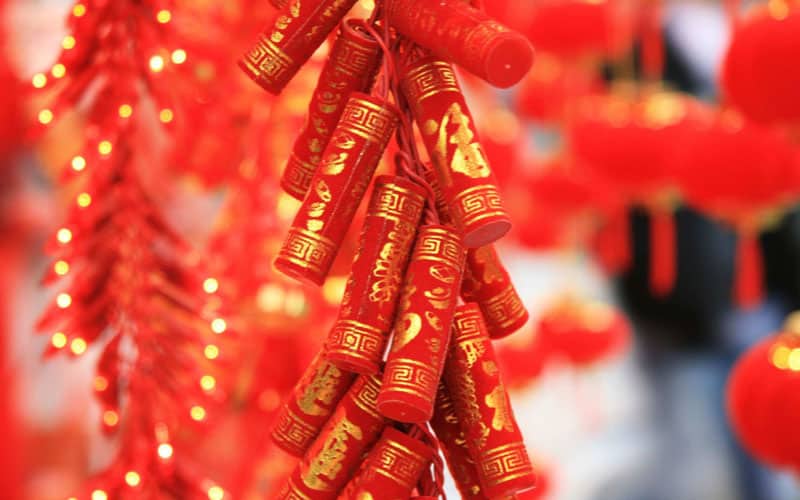
14. Wearing Red
In the new year, buying new clothes is also an essential step. The new clothing represents welcoming the new year, and wearing red is believed to bring good luck. Chinese New Year usually falls in January or February in winter. Wearing something red for Chinese New Year not only keeps you warm but can also be part of your holiday attire, be it an outfit, scarf, or hat. Chinese New Year clothes and accessories are often designed with traditional Chinese elements, such as Chinese cloud images, “Fu” characters, zodiac patterns, and so on.
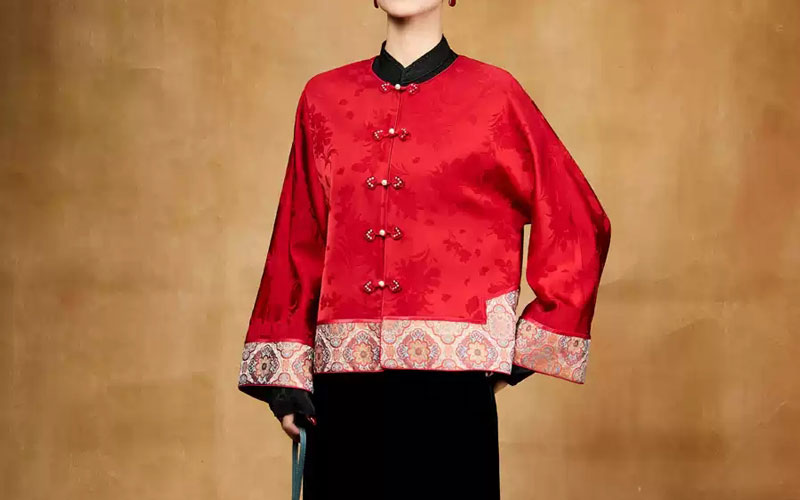
15. Grain Decoration
Five grains refer to the five main food crops in traditional Chinese agriculture. Now, five grains is also used as a synonym for all grains. In Chinese culture, a golden harvest represents harvest and abundance, as well as the well-being of the people and the prosperity of the country. Chinese people make paintings from grain seeds, beans, and other crops. For example, people usually lay out various patterns and words on canvas, such as "五谷丰登 (grain harvest)", "Fu Characters", and so on. Or they will make sculptures, models, wall hangings, and other decorations.
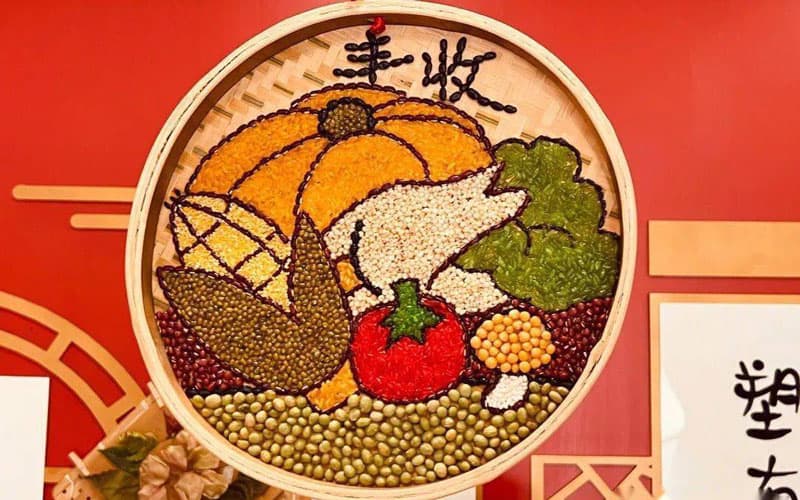
16. Embroidery
Embroidery is a traditional handicraft. It creates various patterns and decorations on the fabric using needles and threads. During Chinese New Year, Chinese people will use embroidery as part of their home decorations. These embroideries usually feature patterns with auspicious and beautiful meanings. Flower and bird patterns are a very common theme, such as peony, chrysanthemum, plum blossom, dragon, and phoenix. In addition, In addition, there is also a pattern of the Fu Character, which features the word “Fu” and shows other decorative designs around the word.
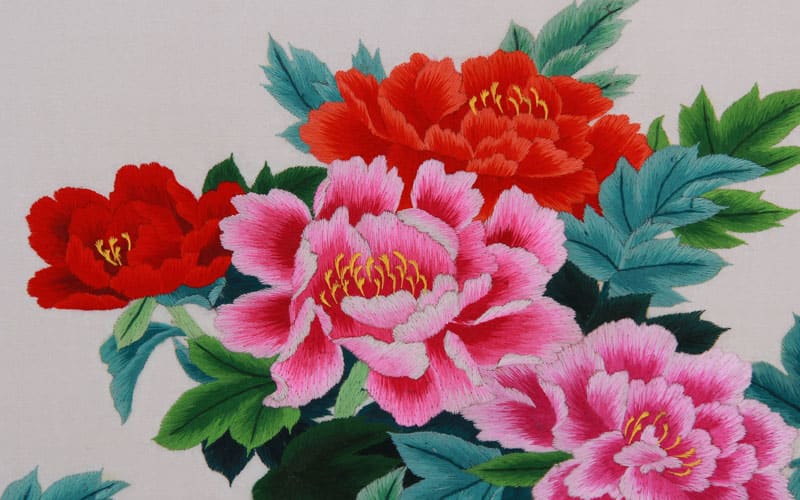
When to Take Down Chinese New Year Decorations
Chinese people usually start putting up Chinese Lunar New Year decorations a few weeks before Chinese New Year. When to take down Chinese New Year decorations is largely up to you. People from different places have different customs and habits. Many Chinese people keep them there until Chinese New Year next year. In some places, they remove some of the decorations at the end of the Chinese New Year. But Spring Festival couplets and door gods are usually kept until next year. Lantern Festival marks the end of the Chinese New Year celebrations.
Chinese New Year decorations in stores and streets may be removed and restored to their usual appearance from the end of February. Some decorations, such as lanterns, can be well preserved for next time.
Where Can I Buy Chinese New Year Decorations
There are many places to buy Chinese New Year decorations, such as specialized Chinese New Year decorations stalls, supermarkets, and shopping malls. Online shopping platforms such as Taobao, Alibaba, and Amazon are also great choices. They are convenient and fast. When buying Chinese New Year decorations, we suggest you plan ahead, because there may be a shortage of decorations or price increases before the Spring Festival.
More about Chinese New Year
Chinese New Year (When, How Long, Traditions, Superstitions)
12 Lucky Chinese New Year Food to Bring Luck and Prosperity

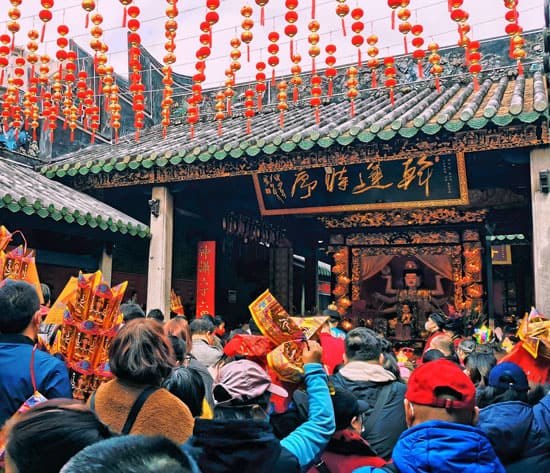
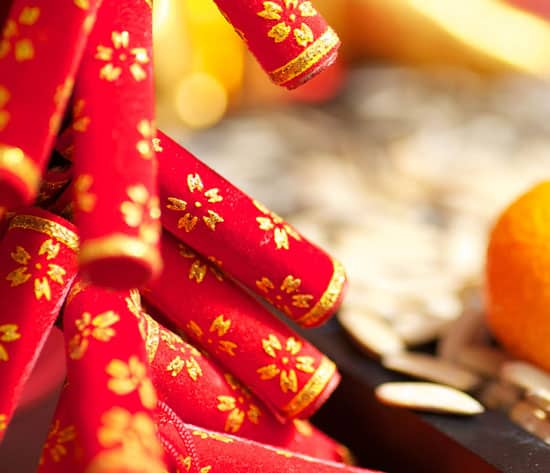
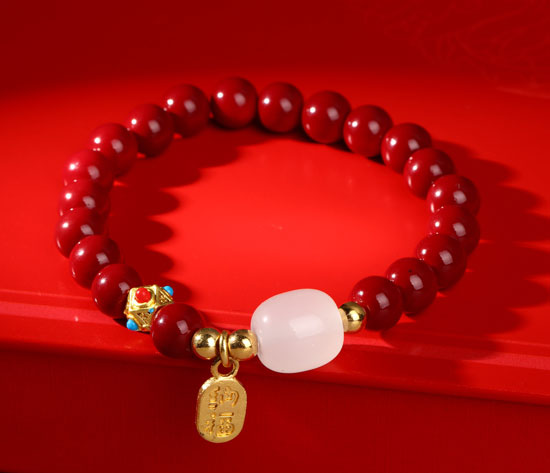

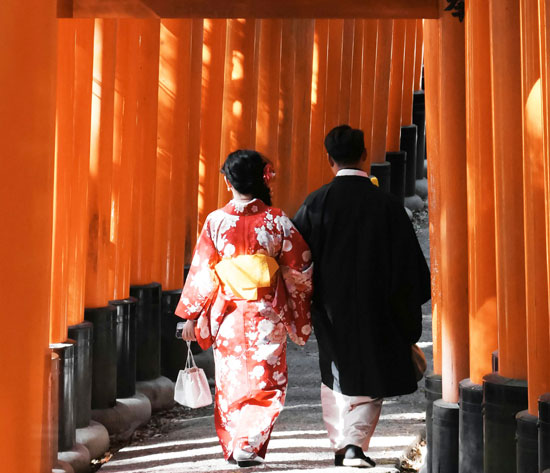
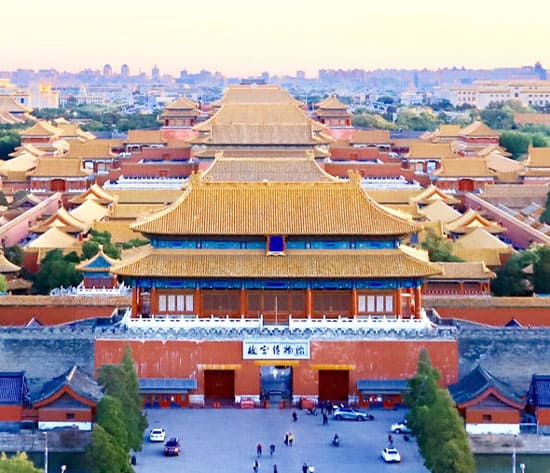
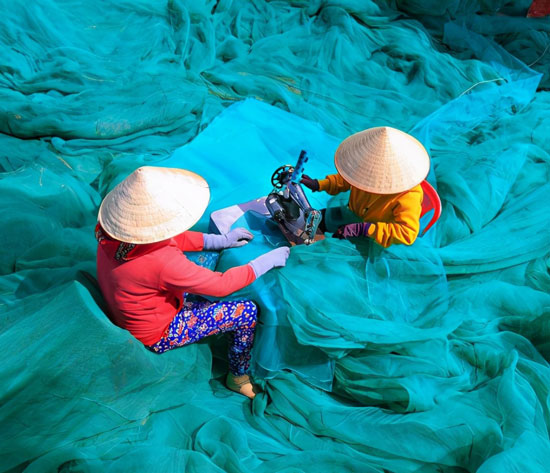
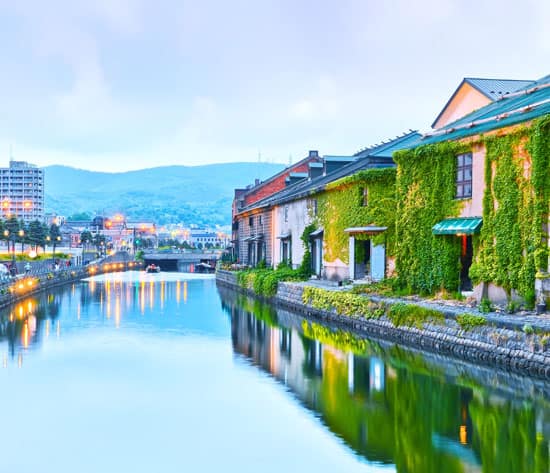
Have a Question?
You might see your comment appear on this page, but your email address and full name will not be published. Your personal information will remain confidential. Our Asia travel experts will get back to you as soon as possible. Required fields are marked *